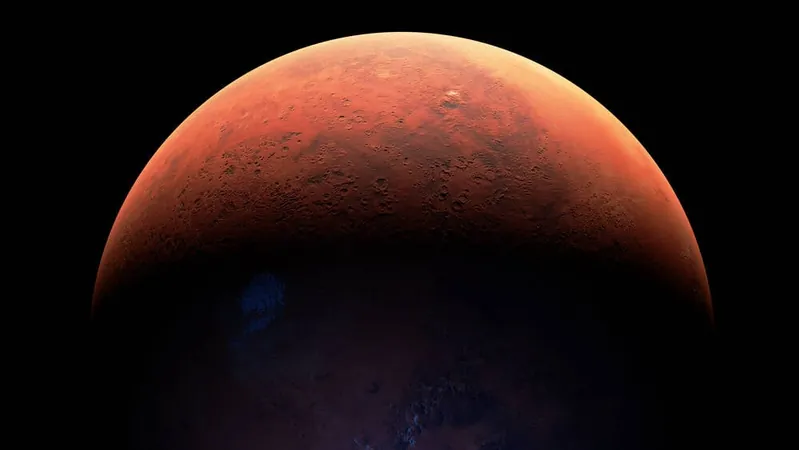
Unveiling Mars: The Once-Wet Desert with Hidden Oases
2025-07-04
Author: Mei
A Dry Planet with a Splash of Life
Recent data from Martian probes reveal that our red neighbor, Mars, was not always the cold, barren desert we see today. Instead, it once hosted fleeting, life-sustaining oases amid arid landscapes, as uncovered by groundbreaking research from the University of Chicago.
Carbon Dioxide Clues and Hidden Carbonates
Led by scientist Edwin Kite, the team examined findings from NASA's Curiosity rover, which unearthed evidence of carbon cycling on Mars. Their focus was on hidden carbonates in Gale Crater—important clues that could explain the planet's dramatic transformation from a warm, water-abundant environment to its current desolate state.
How Water Became Scarce on the Red Planet
The researchers simulated a climate history where increased sunlight melted Martian ice, creating temporary lakes. However, this liquid water didn't stay for long. It interacted with the atmosphere's carbon dioxide, forming carbonates in the rock. This critical process trapped carbon, reducing the greenhouse effect and, ultimately, leading to a colder and drier Mars.
A Chaotic Dance of Desert and Oases
Mars, unlike Earth, undergoes lower volcanic activity, so the sequestered carbon dioxide remains trapped instead of replenishing the atmosphere. Over billions of years, this leaking atmosphere further diminished the pressure on the planet, causing even more water to evaporate. With conditions dropping below water's triple point—where solid, liquid, and gas can coexist—liquid water became a distant memory.
Unlocking the Secrets in Martian Rocks
The study's findings illustrate that past climates, where water existed either on the surface or just below, are recorded in Mars’s sedimentary rocks. According to the published research, the intermittent and patchy waters provide insight into the planet’s history, suggesting these oases persisted surprisingly late into its timeline.
Climate Change: The Role of Carbonates
Interestingly, the formation of carbonates appears to have catalyzed climate shifts. Increased solar activity would create more liquid water, sparking the carbonate formation that subsequently pulled carbon dioxide from the atmosphere, exacerbating the cooling and desertification of the planet.
Towards a Deeper Understanding of Martian History
Kite's team elucidated that chaotic orbital changes impacted the cycles of wet and dry conditions, effectively transforming Mars into a self-regulated desert. Their simulations, which include potential snowmelt as a water source, show that Gale Crater is a reliable record of past liquid water stability.
Looking Ahead: Future Missions Could Confirm Findings
While these discoveries paint a vivid picture of Mars’ watery past, the researchers emphasize the need for further exploration to validate their model. Their hypothesis reflects a testable scenario based on current evidence, making it a promising avenue for future study.
The Ongoing Mystery of Mars' Atmosphere
Ultimately, the loss of Mars’ atmosphere pushed the planet closer to water's triple point, resulting in a drastic reduction of liquid water and making the surface increasingly inhospitable. This research brings us a step closer to understanding why Mars, once a potential cradle for life, now stands as an arid wasteland.




 Brasil (PT)
Brasil (PT)
 Canada (EN)
Canada (EN)
 Chile (ES)
Chile (ES)
 Česko (CS)
Česko (CS)
 대한민국 (KO)
대한민국 (KO)
 España (ES)
España (ES)
 France (FR)
France (FR)
 Hong Kong (EN)
Hong Kong (EN)
 Italia (IT)
Italia (IT)
 日本 (JA)
日本 (JA)
 Magyarország (HU)
Magyarország (HU)
 Norge (NO)
Norge (NO)
 Polska (PL)
Polska (PL)
 Schweiz (DE)
Schweiz (DE)
 Singapore (EN)
Singapore (EN)
 Sverige (SV)
Sverige (SV)
 Suomi (FI)
Suomi (FI)
 Türkiye (TR)
Türkiye (TR)
 الإمارات العربية المتحدة (AR)
الإمارات العربية المتحدة (AR)